The exponential growth of science programs at United Tribes Technical College through fifteen years of NSF support
By Jeremy E. Guinn
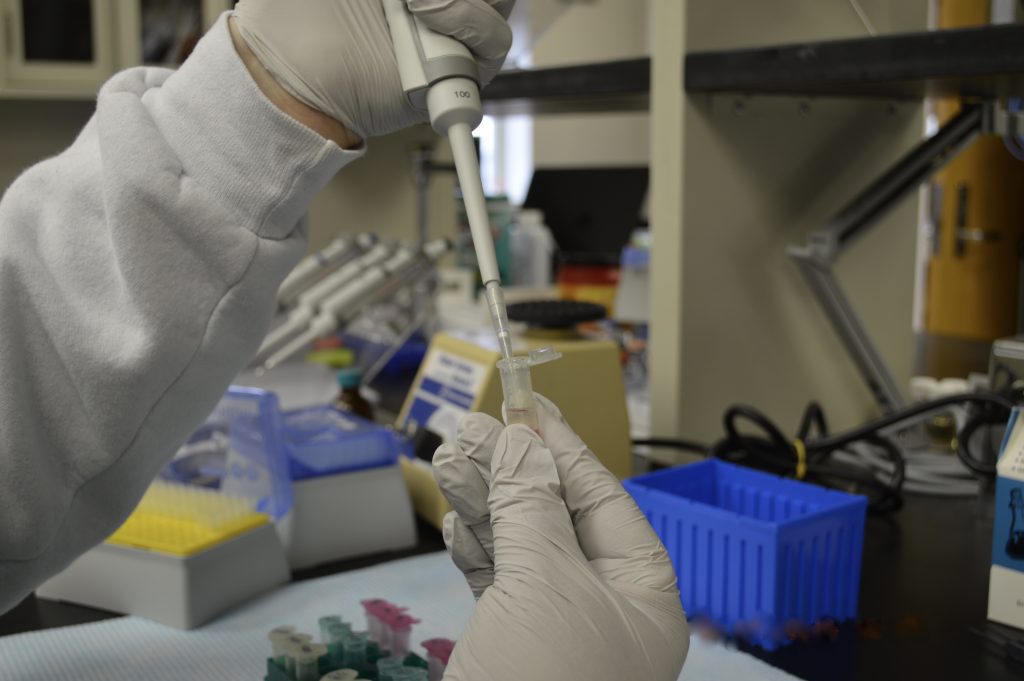
Science programs are very young at tribal colleges. While the first colleges were founded in the late sixties and early 1970s, the first academic programs in the sciences did not take root until the late 1990s and early 2000s. However, this late start allowed tribally controlled colleges and universities (TCUs) to take advantage of several opportunities.
At that moment, science was becoming more inter- and multi-disciplinary as western scientists began to acknowledge that the questions facing the world were bigger than just one field of science expertise. Tribal colleges recognized this development and designed science degrees based on their own traditional values, balanced with the needs of their communities. The interrelation of natural processes is a traditional concept shared among our communities and internalizing these concepts is often an easy fit for students with Indigenous worldviews. Instead of developing biology, chemistry, or geology as separate departments, TCUs developed environmental science programs to study the interactions of natural and anthropogenic processes and to produce graduates who are accustomed to working in collaborative teams and skilled at finding links between fields.

Development of STEM capacity within many tribal colleges also coincided with establishment of the Tribal Colleges and Universities Program (TCUP) within the National Science Foundation. Created in 2001, TCUP has, for nearly two decades, provided funding needed to develop new courses, degree programs, and research within tribal colleges, including United Tribes Technical College, which is located in Bismarck, ND and serves all of the state’s five reservations. STEM programs at United Tribes Technical College (UTTC) advanced rapidly by engaging students from diverse backgrounds in research-integrated academic programs. Growing exponentially from the first science degree offerings in 2004, fifteen years of National Science Foundation support has dramatically changed the landscape of STEM at UTTC and built a springboard for future growth. The J-curve graph, denoting exponential growth, reflects growth in the quality of STEM programming offered at UTTC.
Fifteen years of NSF support
Initially, National Science Foundation support was identified as a means to produce environmental technicians for tribal natural resource agencies. The Tribal Environmental Science (TES) Department was initiated through a Tribal Colleges and Universities Program Implementation Award in 2004, which resulted in the development of an AAS degree in environmental science. Prior to this, there were no science degrees, merely a few general education science courses for other degree programs.
The environmental science program was designed to meet the expressed need of tribes in the northern Plains for environmental technicians for sampling the biotic and physical features of tribal lands. Additionally, the college’s first science degree laid the foundation for conducting undergraduate research and STEM education at increasingly higher levels. The college looked towards a future in which tribal members were conducting research and analyzing research data to protect their home communities and support natural resource conservation for the tribe.
The department is founded upon the use of research experiences as an educational tool to improve student engagement, retention, and completion.An undergraduate research culture is integrated into the academic department. At UTTC, we flipped the standard model of training scientists by introducing science research to students early in their academic careers, reinforcing research and scientific communication skills throughout their undergraduate program, and providing opportunities to practice applying the scientific method to address real-world questions.
Reflecting this philosophy, the associate degree program, which began in 2004, requires ten credits of research-intensive courses. In fall 2016, the department began offering a fully accredited BS degree in Environmental Science & Research, which includes a total of nineteen research credits, including two full research projects. The program graduated the first three BS students in May 2018, marking a new era for the institution. Their senior research topics included comparing traditional methods for extracting medicinal compounds in plants, identifying the impacts of exercise on stress hormone levels in shelter dogs, and gene expression impacts on androgenic receptors in the brain.
Initial STEM programs
In 2004, the science programs shared one classroom and one lab in the college’s Skills Center, while science faculty offices were across campus. A student area, equipped with a few computers, was carved out of the basement in an historic building and was used for student meetings. Between 2004 and 2010, the program typically consisted of a department administrator and one or two faculty members who often had significant teaching duties within the general education or nursing departments.
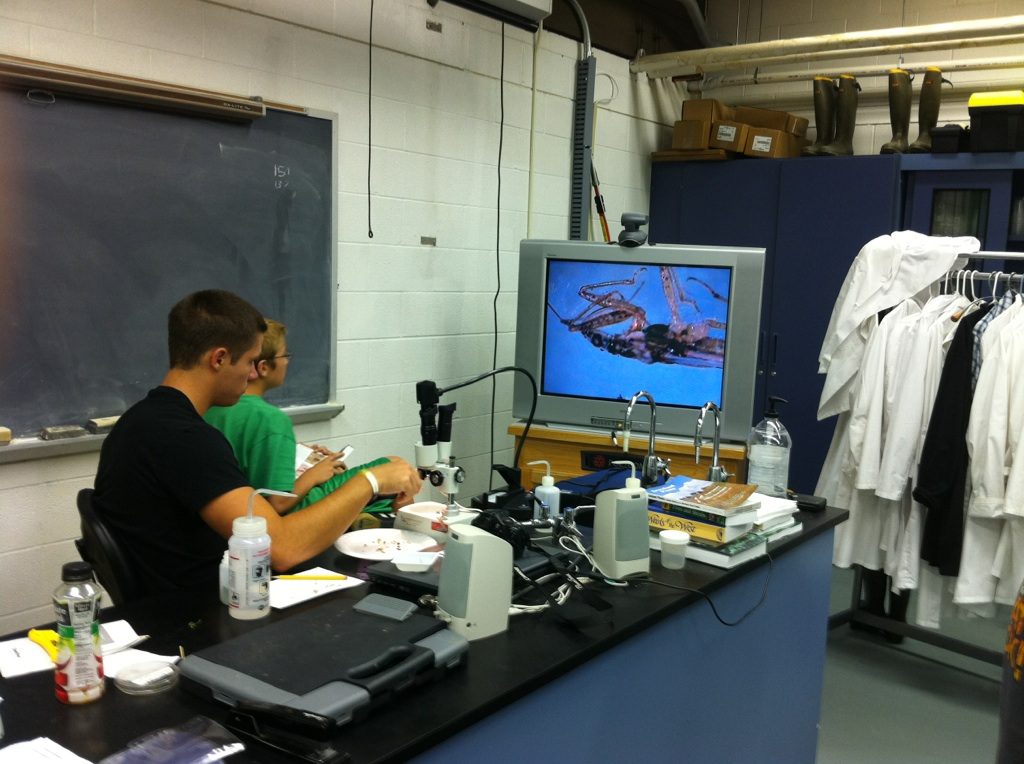
High faculty turnover was common during this time period, with two to three years being the most common length of employment. A few PhDs passed through the program, but a BS degree was the most common degree held. Between 2004 and 2010, very little research was conducted at UTTC. Most opportunities for students to participate in research came through external partnerships. A one-semester research course was implemented, but had many limitations in scale and scope.
However, new opportunities were emerging. An NSF instructional capacity building grant (ICE-TI) award in 2010 provided associate-level degrees focusing on environmental technicians and continued to build capacity in teaching and conducting STEM research at the college. Also, recognizing that a lack of science facilities was a key limiting factor in the growth of science programs, a new Science and Technology Center (STC) was constructed on the south side of campus. Completed in 2013, the center was designed to house a BS science program, showing the institution’s long-term commitment to continued expansion in the sciences. The STC provides six teaching classrooms, three teaching laboratories, a dedicated research analytical laboratory, office space for eleven department faculty members, and two group-study areas. The south campus provides ample outdoor classroom space, including access to open grasslands, disturbed soils, an ephemeral wetland, and a campus pond.
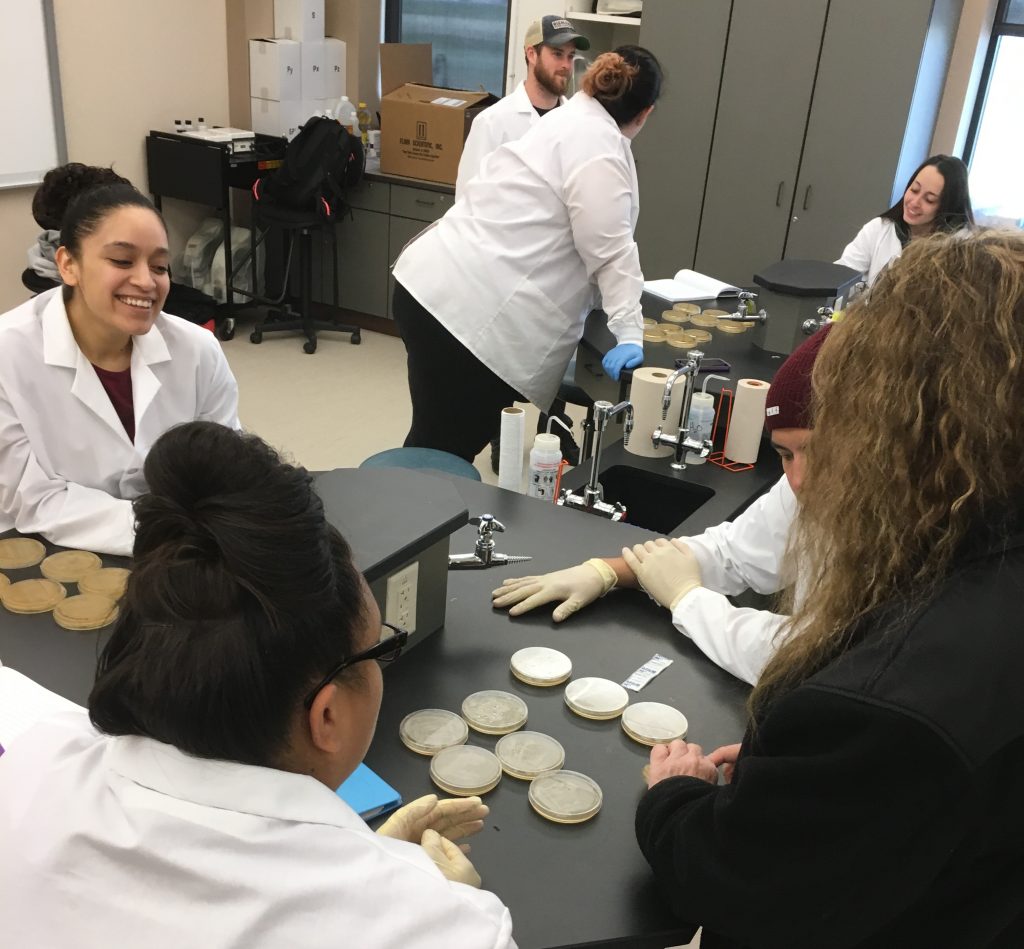
A National Science Foundation TCUP award in 2016 provided support to elevate cellular and molecular science courses and expand research opportunities. NSF funds for equipment, supplies, and curriculum development facilitated rapid growth of programs, particularly in cellular and molecular fields. A genetics lab, equipped with PCR capabilities and a MiSeq sequencer, provides students and faculty with the capacity to analyze DNA. The environmental analysis lab, meanwhile, has the capacity to conduct advanced analysis of water quality and contaminants in soils.
The current TCUP support is aimed at increasing the number of Native American student graduating with STEM degrees through a streamlined AS and BS degree, enhanced retention efforts, engaged learning instruction, and opportunities for student and faculty research.
The current academic program
As the program has grown and stabilized, long-tenured faculty are now the norm, with an average of over eight years of employment (excluding new hires in the past ten months). Currently, the programs have five PhDs and five MS degree-holding faculty in positions such as Chemistry, Genetics, Cell and Microbiology, Range Science, Mathematics and Statistics, Wildlife Ecology, Biomaterials, Toxicology, and Conservation Biology. Some of these individuals entered UTTC with the existing degrees, while others increased their degree level while working full time at the institution.
In 2019, research is fully integrated into academic programs and full summer programs, and is required for both the AS and BS degree programs. Current TES Department faculty include Mandy Guinn, MS (Department Chair, Genetics), Julie Stock-Porter, MS (Human Biology), Levi Binstock (Range Sciences), Alicia Andes-Buysee, PhD (Ecology) and Paul Pansegrau, PhD (Chemistry), who recently received an NSF Small Grants for Research for his work on reformation of methane.
Student research has been key to building the science program at UTTC by increasing engaged and experiential learning opportunities for students, expanding professional collaborations with external partners, and enhancing the infrastructure to conduct research at a more advanced level. Students provide a departmental seminar and defend their program at the end of their sophomore and senior years. Summer research experience programs, held on-site or with external partners, are very common with about 85 percent of our students participating in a summer program each year and every student participating in at least one summer program during their time at UTTC. Although most individual student project topics are conceived directly by the students, several themes have emerged in our research program. Research themes include:
- Economic and biological value of North Dakota bats.
- Chemical analysis of traditional, medicinal plants
- Wildlife movement and resource use in changing climate and environmental conditions
- Impacts of environmental contaminants in soil and water
- Biomaterials engineering, including soy-based insulation foam
- Invasive species, management and disease ecology
- Acoustic, UV, and thermal ecology
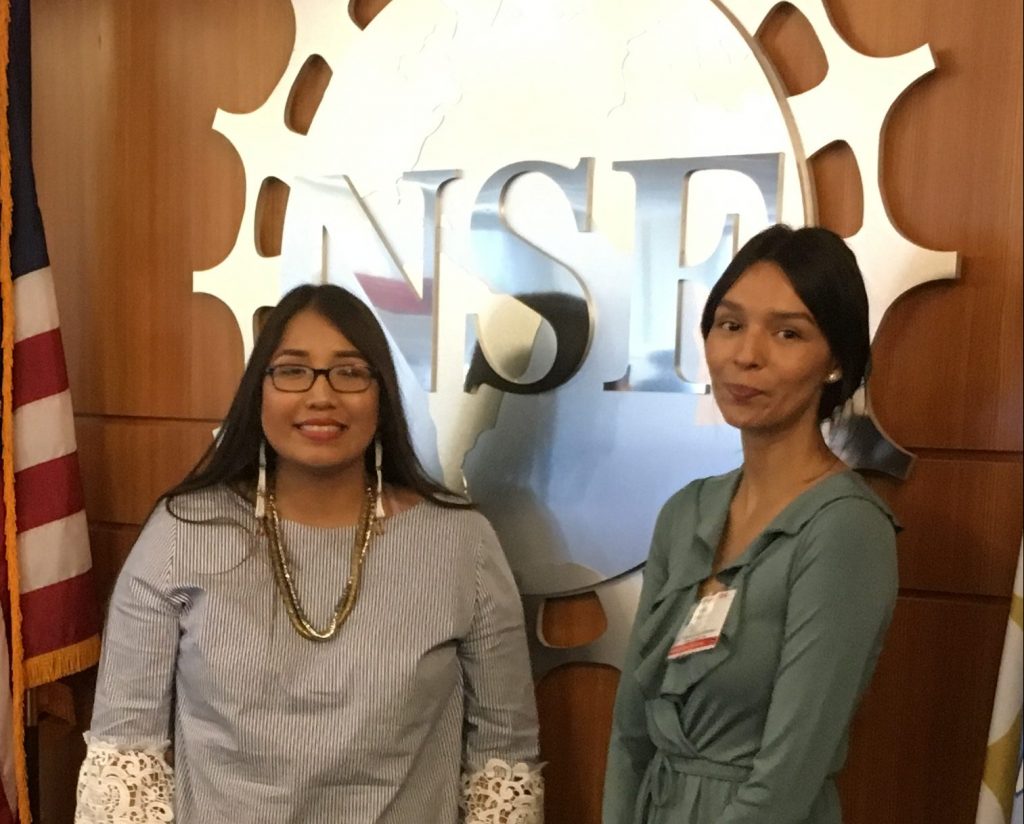
The Tribal Environmental Science Department has maintained a high-level of funding from competitive external grants since its inception and continues to grow in exciting new ways. The National Science Foundation has provided foundational support for academic programs, including faculty and student research, through its TCUP program. Undergraduates are supported through a wide range of opportunities, usually focused on research experience and/or course-based research programs. Student support has come from NSF programs such as TCUP program opportunities and from the Tribal College Research Experiences for Undergraduates (REU), NSF EPSCoR, and All Nations Louis Stokes Alliance for Minority Participation (ANLSAMP) programs.
Expanding Research
More recently, the college has looked beyond its campus borders to serve its communities with science programming at a new level. In October 2018, UTTC received an NSF award to establish its first research center. The Intertribal Research & Resource Center (IRRC) focuses on applying UTTC science to address community needs in the areas of food, energy, and water sustainability. The IRRC works with northern Plains’ tribes to provide research, outreach, training, and education to address environmental questions and enhance natural resource planning. The IRRC synergizes the talents of the Environmental Science Department, Land Grant Sustainable Ag and Food System Program, and IRRC research faculty to deliver research in renewable energy, toxicology, natural resource use, agricultural biomaterials, wildlife ecology, sustainable food systems, nutrition, microbiology, organic chemistry, and genetics. For the first time, UTTC is able to provide full-time research faculty to tackle complex and challenging questions for tribal communities.
Increasing research activities led to increasing opportunities to share our work with a broader audience. A dedicated Tribal STEM Outreach Coordinator position at the IRRC has elevated partnerships and opportunities to provide full-scale professional outreach to tribal communities in the northern Plains. Community programming, including global change planning, research, and K-12 STEM activities have grown our impact and rebranded UTTC STEM programs within the region. The programs collaborated with other programs on campus to build a solar trailer, affectionately nicknamed “The Solar Roller” and the college is seeking funds to construct a makerspace mobile outreach unit. The Solar Roller will reach out to tribal communities across the region to engage and inspire community members of all ages. The IRRC provides academic-year research opportunities as well as providing additional research options for students.
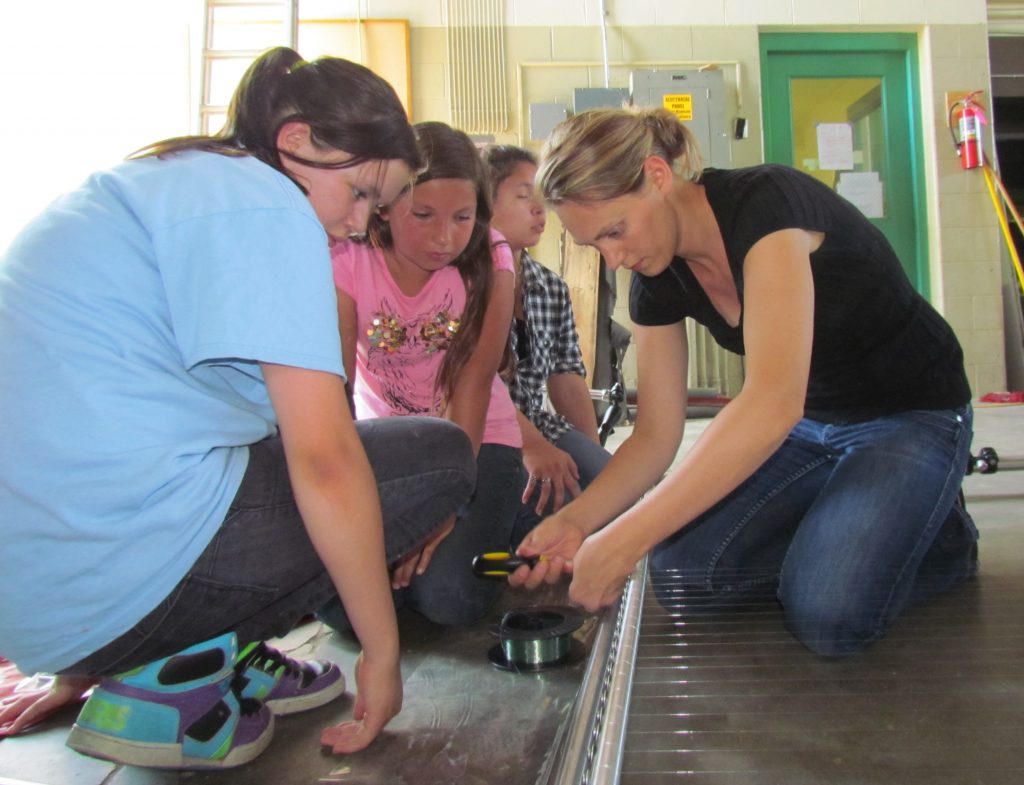
Intertribal Research & Resource Center faculty and staff include: Jeremy Guinn, PhD (Center Director, Traditional Animal Food Populations), Gurjot Dhaliwal, PhD (Research Faculty – Renewable Energy and Biomaterials Engineering), Emily Biggane, PhD (Environmental Toxicology and Tumor Growth), and Anna Bahnson, MAT (Tribal Science Outreach Coordinator).
Conclusion
Science programs at UTTC have grown rapidly in fifteen years, from only a few general science courses to a BS degree with active research and community outreach programs. From observations of natural systems, we know that exponential growth cannot last indefinitely; there are always limiting factors. Rather than spread resources among many different programs, UTTC focused on building a strong and deeply ingrained science department that will provide advanced training for many years. NSF support transformed our ability to offer science programs. Yet, there continues to be a high need for STEM professionals and STEM teachers in the communities that we serve. Through directed planning, professional development and advanced degree support for faculty, and an innovative research-integrated academic program, UTTC is poised for an exciting future in providing science education and training.
Jeremy Guinn is Director of the Intertribal Research & Resource Center at United Tribes Technical College.
